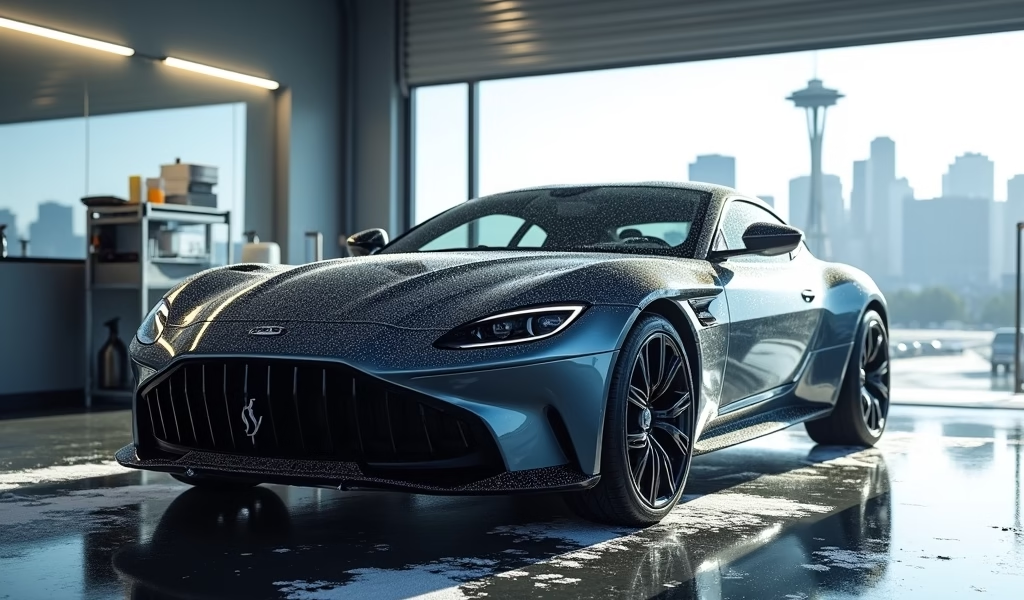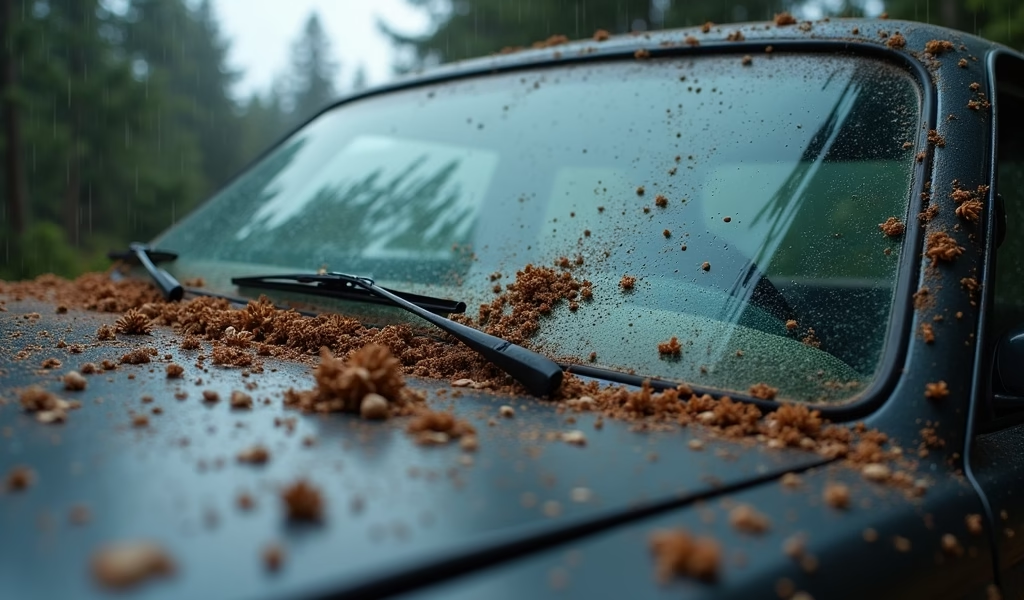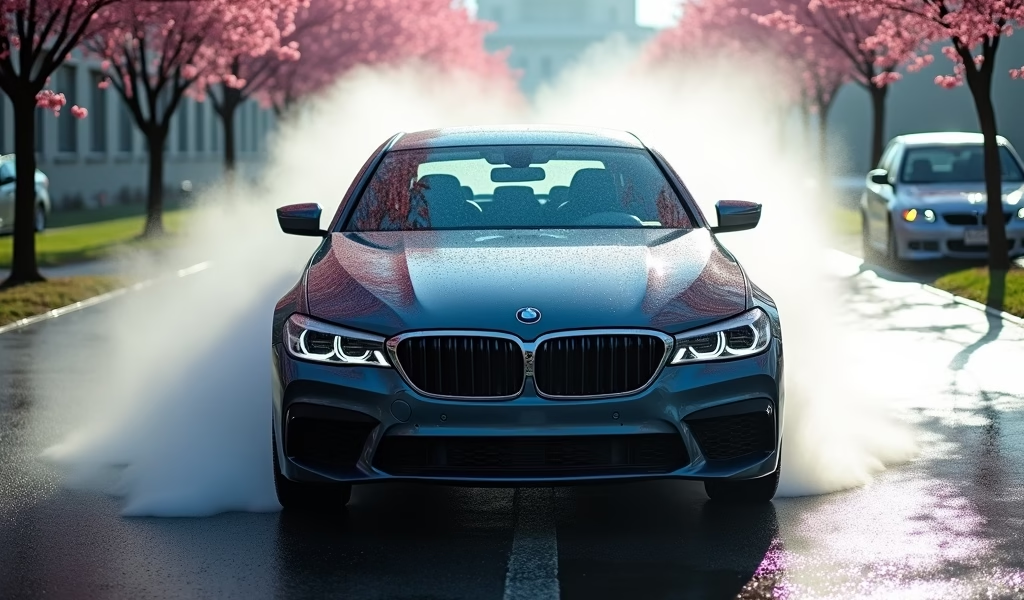Overview
This article provides five key strategies for protecting vehicles in Washington’s challenging environment through proper car wash techniques, including timing visits strategically, choosing between touchless and soft-touch options, preparing vehicles properly, considering membership benefits, and implementing post-wash care. It emphasizes that regular professional washing is essential preventative maintenance rather than a luxury, with specific recommendations for each season’s unique challenges to preserve vehicle appearance and prevent corrosion damage.
Table of Contents
- Why Washington Car Washes Are Different
- Finding the Best Washington Car Wash Near You
- Pro Tip 1: Timing Is Everything
- Pro Tip 2: Touchless vs. Soft-Touch Options
- Pro Tip 3: Pre-Wash Preparations
- Pro Tip 4: Membership Benefits Worth Considering
- Pro Tip 5: Post-Wash Care Secrets
- Eco-Friendly Choices for Washington Vehicles
- Seasonal Considerations for Washington Car Washes
- Conclusion
- Frequently Asked Questions
Why Washington Car Washes Are Different
Looking for the best Washington car wash isn’t just about getting your vehicle clean – it’s about protecting your investment from the unique challenges our beautiful but demanding Pacific Northwest environment throws at us. As someone who’s been working on cars in this region for over 15 years, I can tell you firsthand that Washington’s combination of rain, sea salt (if you’re near the coast), and seasonal road treatments creates a perfect storm for vehicle deterioration.
The reality is that Washington’s frequent rainfall doesn’t actually clean your car as many folks believe. Instead, it deposits environmental contaminants that slowly damage your paint. I’ve seen countless vehicles where owners thought Mother Nature was handling their car wash needs, only to discover significant paint degradation and undercarriage corrosion over time.
Washington’s car washes are specially formulated to address our regional challenges. The best ones use cleaning agents specifically designed to neutralize road salt during winter months and remove the stubborn tree sap and pollen that bombard vehicles during our gorgeous springs and summers. This isn’t your standard car wash experience – it’s preventative maintenance that extends your vehicle’s life and appearance.
Finding the Best Washington Car Wash Near You
The quest for the best Washington car wash means looking beyond convenience and price. While it’s tempting to choose whatever’s closest, I recommend investigating these key quality factors that separate exceptional establishments from mediocre ones:
- Water recycling systems (environmentally responsible operations)
- Equipment maintenance schedules (well-maintained brushes cause less micro-scratching)
- pH-balanced cleaning solutions (gentler on clear coats and trim)
- Undercarriage cleaning capabilities (essential for Washington vehicles)
- Drying methods (preventing water spots from our mineral-rich water)
Don’t be shy about asking staff about these details – professional operations will be proud to share their standards. Many of the best Seattle car wash locations even post information about their cleaning processes and equipment maintenance right in their waiting areas.
I always recommend checking online reviews, but look specifically for comments about how cars hold up over time after regular washing at a particular location. The real value of a quality car wash shows up months later in maintained paint gloss and protected surfaces – not just how shiny your car looks driving away.

Pro Tip 1: Timing Is Everything
Let me share a little insider secret from years in the auto care industry: when you wash your car matters almost as much as where you wash it. In Washington, timing your car wash strategically can dramatically improve both the cleaning effectiveness and the longevity of that fresh-washed look.
Avoid washing immediately after rain has stopped. I know it seems counterintuitive, but washing right after rainfall means you’re dealing with elevated humidity levels that significantly extend drying time. This creates perfect conditions for water spotting, especially in our mineral-rich Washington water.
The ideal scenario? Wait for a dry day following several rainy ones. This gives accumulated road grime and contaminants time to soften and become more easily removable. If possible, schedule your wash for mid-morning when temperatures are rising but before the potential afternoon rush that many premium car washes experience.
According to Consumer Reports’ automotive care experts, washing your car every two weeks is optimal in regions with environmental conditions similar to Washington’s. During winter months when road salt is present, increase this frequency to weekly if possible to prevent accelerated corrosion.
Pro Tip 2: Touchless vs. Soft-Touch Options
The touchless versus soft-touch debate is particularly relevant for Washington car owners. Both systems have distinct advantages, and your choice should depend on your specific vehicle and circumstances.
Touchless car washes use high-pressure water jets and strong detergents to remove dirt without physical contact with your vehicle. This eliminates the risk of brush-induced micro-scratches, which is excellent for vehicles with specialty finishes or fresh paint. However, in Washington’s particularly grimy winter conditions, touchless systems sometimes struggle to remove all road film without multiple wash cycles.
Soft-touch systems use cloth strips or foam materials that physically contact your vehicle’s surface. Modern soft-touch technology has improved dramatically – today’s microfiber materials, properly maintained, can safely clean without damaging paint. These systems typically provide more thorough cleaning of stubborn Washington road film and salt residue.
My professional recommendation? Alternate between the two based on season and condition:
- Use touchless when your vehicle has light soiling or during pollen season
- Opt for soft-touch during heavy winter grime periods (provided the facility properly maintains their equipment)
- For vehicles with ceramic coatings or paint protection film, follow the manufacturer’s recommendations – generally favoring touchless options
The crucial factor is the maintenance standard of the car wash facility. A well-maintained soft-touch system is preferable to a poorly maintained touchless system with calcified nozzles that might damage paint with excessively concentrated cleaning chemicals.
Pro Tip 3: Pre-Wash Preparations
The difference between an average wash and an exceptional one often happens before you even enter the car wash tunnel. Taking a few minutes for pre-wash preparations will dramatically improve your results and protect your vehicle from potential issues.
First, always remove items that could interfere with cleaning or be damaged during the wash process. Retract antennas, fold mirrors if possible, and remove custom accessories or decorations. Check for any loose trim or damaged areas that high-pressure water might exacerbate – something I’ve unfortunately seen happen too many times.
For Washington vehicles specifically, I strongly recommend using the pre-soak option if available. Our particular combination of road film, tree residue, and environmental contaminants benefits tremendously from softening before the main wash cycle begins. This pre-treatment helps loosen stubborn deposits without requiring harsher cleaning action later in the process.
If your vehicle has significant mud accumulation (common after enjoying Washington’s beautiful outdoor recreational areas), use the self-service pressure washer available at many facilities to remove heavy soiling before entering the automated wash. This prevents mud from being spread across your paint during the washing process, potentially causing fine scratches.
Finally, consider skipping the automatic air freshener option. Research from the Environmental Protection Agency has found that many automotive air fresheners contain volatile organic compounds that can contribute to indoor air pollution. Instead, try natural alternatives like essential oil diffusers designed for vehicles if you want a pleasant scent.

Pro Tip 4: Membership Benefits Worth Considering
Let’s talk dollars and sense. As someone who’s analyzed the economics of vehicle maintenance extensively, I can confidently say that a quality car wash membership at a top Washington facility can be one of the smartest investments for your vehicle – if you use it correctly.
Most premium Washington car washes offer tiered membership programs ranging from basic exterior washes to comprehensive packages including undercarriage treatment, wheel cleaning, and protective wax applications. The value proposition is simple: frequent washing at a reduced per-wash cost encourages preventative maintenance.
Here’s my practical advice for maximizing membership value:
- Calculate your break-even point (usually 2-3 washes per month makes membership worthwhile)
- Choose a membership level that includes undercarriage cleaning – absolutely essential in Washington
- Verify if your membership is valid at multiple locations for convenience
- Ask about additional perks like free vacuum access or discount days for premium services
One often overlooked benefit: many membership programs allow you to quickly get a wash after unexpected weather events or road treatments without considering the additional cost. This spontaneous care can prevent contaminants from bonding to your paint, potentially saving hundreds in future detailing or paint correction.
The membership sweet spot typically includes unlimited exterior washes with monthly applications of protective treatments. This balance provides frequent cleaning with periodic protection refreshing – perfect for Washington’s challenging conditions.
Pro Tip 5: Post-Wash Care Secrets
What you do immediately after leaving the car wash can be just as important as the wash itself. I’ve developed a simple post-wash routine that helps Washington drivers maximize their car wash investment and extend that fresh-clean appearance despite our challenging environment.
Keep microfiber towels in your vehicle for quick touch-ups. Even after the best automatic drying systems, water can seep from crevices, mirrors, and around emblems. A quick wipe prevents those frustrating water spots that are particularly common with our mineral-rich Washington water supply.
Take advantage of the free vacuum stations while your vehicle is still freshly cleaned. Removing interior debris immediately prevents it from being tracked onto your clean carpets and upholstery. Pay special attention to floor mats, which can hold surprising amounts of moisture and debris that later transfers to your clean interior.
Consider applying a quick spray detailer to exterior surfaces after washing during summer months. Products containing UV inhibitors provide an additional layer of protection against Washington’s surprisingly intense summer sunshine, which can accelerate clear coat deterioration even in our temperate climate.
Finally, leave your windows slightly cracked for the first 15-30 minutes after washing if weather permits. This allows any trapped moisture to escape rather than condensing inside your vehicle – particularly important during our cooler seasons when the temperature difference between the inside and outside of your windows can create significant condensation.
Eco-Friendly Choices for Washington Vehicles
As Washingtonians, our connection to our natural environment runs deep. I’m frequently asked about environmentally responsible car washing options that don’t compromise on cleaning effectiveness. The good news is that many of Washington’s best car wash facilities are leading the industry in sustainable practices.
Professional car wash facilities typically use significantly less water per vehicle than home washing – approximately 35-40 gallons compared to 80-140 gallons for a typical driveway wash, according to WaterSavers research. More importantly, commercial facilities must properly collect and process wastewater, preventing contaminants from directly entering our precious waterways.
When evaluating eco-friendly options, look for facilities that prominently advertise:
- Water reclamation systems (recycling and filtering water for reuse)
- Biodegradable cleaning agents (breaking down naturally after use)
- Energy-efficient equipment (reducing carbon footprint)
- Solar panel installations (increasingly common at premium Washington locations)
Many environmentally conscious car wash facilities in Washington now display certification from organizations like WaterSavers or EnviroStars, indicating their commitment to sustainable practices. These certifications provide independent verification of environmental claims – something worth considering when choosing where to spend your car care dollars.
Seasonal Considerations for Washington Car Washes
Washington’s distinct seasons each present unique challenges for vehicle care. Adapting your car wash strategy seasonally protects your vehicle through changing environmental conditions.
During winter, increasing your wash frequency is crucial. Road salt and de-icing chemicals used on Washington roads are exceptionally corrosive to your vehicle’s undercarriage and exposed metal components. I recommend washing weekly during periods when roads are being treated, always selecting options that include thorough undercarriage cleaning.
Spring brings pollen and tree sap challenges. These sticky substances bond firmly to automotive surfaces, potentially causing etching if left untreated. Look for car wash packages that include pre-soak treatments specifically formulated to dissolve these organic contaminants. After washing, park away from trees if possible to minimize immediate recontamination.
Summer’s intense UV radiation (yes, even in Washington!) accelerates oxidation of your paint’s clear coat. This season, prioritize wash packages that include protective wax or sealant applications to provide a sacrificial layer against sun damage. These treatments typically last 2-4 weeks, so consider packages that include regular reapplication.
Fall presents the unique challenge of acidic leaf debris. When wet leaves sit on your vehicle, they release tannic acids that can permanently stain clear coats. Regular washing removes these leaves before damage occurs, and removing accumulated leaves from your vehicle’s cowl (where the hood meets the windshield) prevents drainage system blockages.
Conclusion
Finding the best Washington car wash isn’t just about convenience or price – it’s about understanding how proper vehicle care protects your investment against our unique regional challenges. From our persistent rainfall to seasonal road treatments, Washington vehicles face environmental factors that require thoughtful maintenance.
Remember that regular washing isn’t a luxury; it’s preventative maintenance that can save thousands in potential repairs and preserve your vehicle’s appearance and value. By following the five pro tips outlined in this guide – strategic timing, choosing appropriate wash types, proper pre-wash preparation, considering membership benefits, and implementing post-wash care – you’ll maximize the effectiveness of every wash.
The best car wash routine is the one you’ll actually follow consistently. Whether that means finding a premium facility near your daily commute or scheduling monthly detail services, the key is regular maintenance adapted to Washington’s seasonal needs. Your vehicle deserves protection against our beautiful but challenging environment – and implementing these professional recommendations will help ensure it stays looking great for years to come.
Frequently Asked Questions
How often should I wash my car in Washington state?
During rainy seasons, once every two weeks is sufficient for most vehicles. Increase to weekly washing during winter months when road salt is present or if you frequently park under trees that drop sap.
Are touchless car washes better for my vehicle?
Touchless washes reduce the risk of surface scratching but may not clean as thoroughly as soft-touch systems during heavy soiling conditions. The best choice depends on your vehicle’s current condition and the facility’s maintenance standards.
What’s the minimum car wash package I should get in Washington?
Always choose packages that include undercarriage cleaning, especially during winter months. The additional cost is minimal compared to potential rust repair expenses.
Can I just wait for rain to wash my car in Washington?
Rainfall doesn’t clean your vehicle – it actually deposits environmental contaminants that can damage your paint over time. Professional washing removes these deposits and applies protective treatments.
Are car wash memberships worth it in Washington?
Memberships typically become cost-effective at 2-3 washes per month. They encourage consistent maintenance and often include valuable protective treatments that are particularly beneficial in Washington’s climate.

